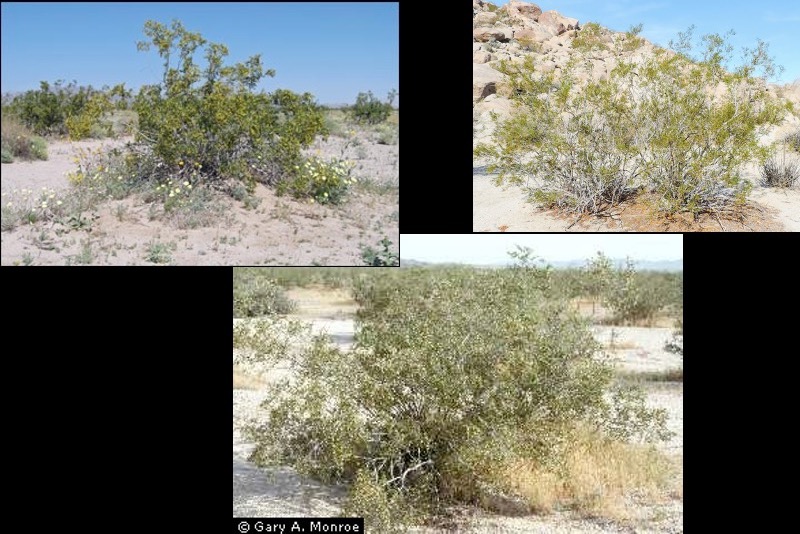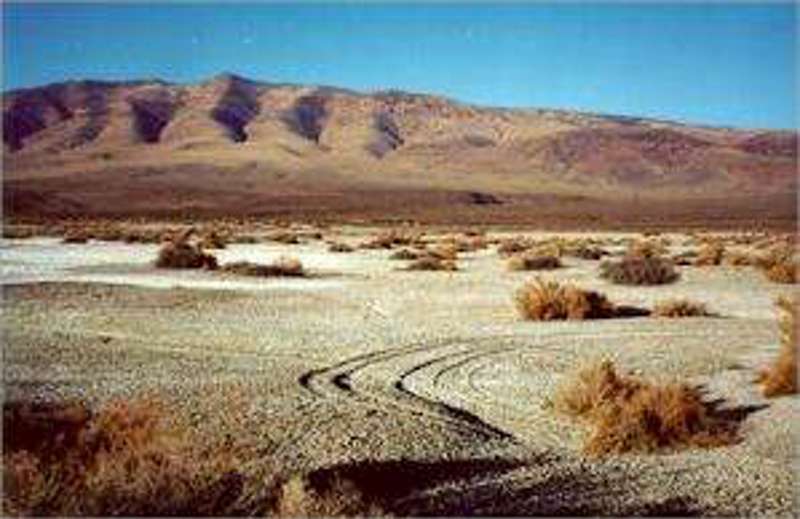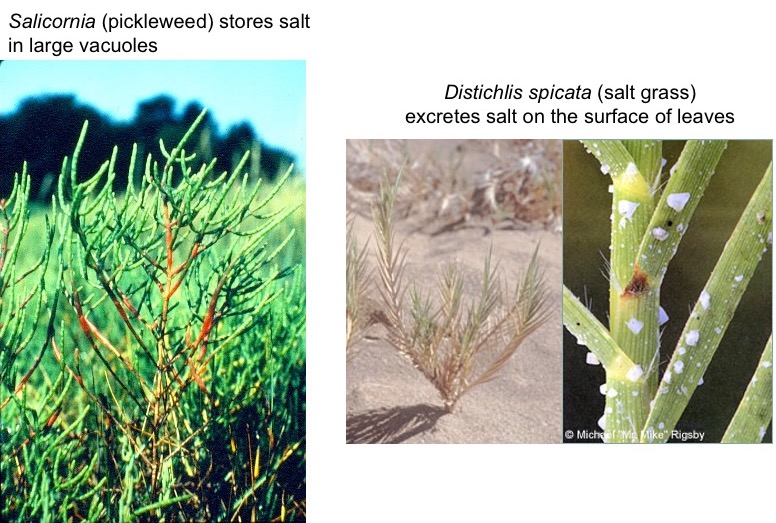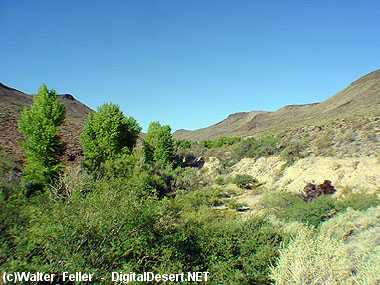Patterns in Deserts
Fertile Islands
Zones of relatively fertile soil around shrubs in the desert have been called "Fertile Islands". They tend to support more luxurious growth of numerous species, leading to a pattern in which species are clumped together with relatively bare areas between them.

Soil tends to be more fertile under the shrubs for several reasons.
- The extensive root systems of the shrubs extend out into the bare zones between shrubs and mine the soil for mineral nutrients from a large area. However, when leaves and other above-ground parts die, they fall primarily under the shrub, decay there, and release nutrients.
- Wind slows as it passes through the canopies of the shrubs. As wind slows, dust, leaf litter, and other material that was being carried in the wind tends to settle out of the air. Thus, soil and organic matter is deposited primarily under shrubs.
- Animals tend to seek shelter and shade under shrubs. Some researchers have suggested that this causes nutrients (in urine and feces) to be deposited preferentially under shrubs.
Smaller plants (annuals and others) tend to cluster under shrubs for several reasons.
- The soil is more fertile there (see above)
- Seeds of plant tend to accumulate under shrubs as wind (carrying seed) is slowed by the shrub canopy.
- It is less hot and dry under a shrub canopy. Although the shrub does use water, the shade cast by the shrub canopy reduces surface evaporation, making the soils less dry for small plants that see only the surface environment. The cooler, more mesic environment under a shrub canopy promotes seedling survival.
Salt Flats
Salt flats or salt pans can occur in depressions in deserts. Salt accumulates on the surface of the soil. Few plant species can tolerate such a saline environment.

Please read about the factors that cause salt flats to form by following this link.
Salt in the soil is detrimental to plants in two ways:
- Salt increases the osmotic concentration in the soil solution, making it more difficult for plants to take up water
- Salt ions are toxic at high concentrations in cytoplasm (interfering with protein folding, etc.)
Plants that can tolerate higher levels of salt in soil may...
- ...exclude salt at the root. (But most plants do this to some degree, and it is never completely effective.)
- ...sequester salt in vacuoles in the plant's cells. Some salt-tolerant plants have succulent ephemeral tissues. Succulence indicates the presence of cells with large vacuoles and the capacity to store a lot of salt. There is a limit to how much salt a single cell can store, however, so salt-tolerant plants with succulent tissues tend to have cells that don't live a long time.
- ...secrete salt solution from glands on the plant surface
The plants below are found both in salt marshes along the coast and in salty areas of drier inland areas.
Salicornia (pickleweed) has a succulent stem where salt can be stored in vacuoles. Note that the living cells in the older part of the Salicornia, below, are dying (presumably, full of salt).
Distichlis spicata (salt grass) is a species that excretes salt from glands on its leaves. (You can see the dried salt crystals on the plant below.)

Riparian Areas and Oases
Where water comes to the soil surface you often find trees in deserts. Riparian forests of willows, cottonwoods and other trees may be found along creeks and rivers.

Palm oases, near streams and springs in the desert, support California's only native palm species, Washingtonia filifera.